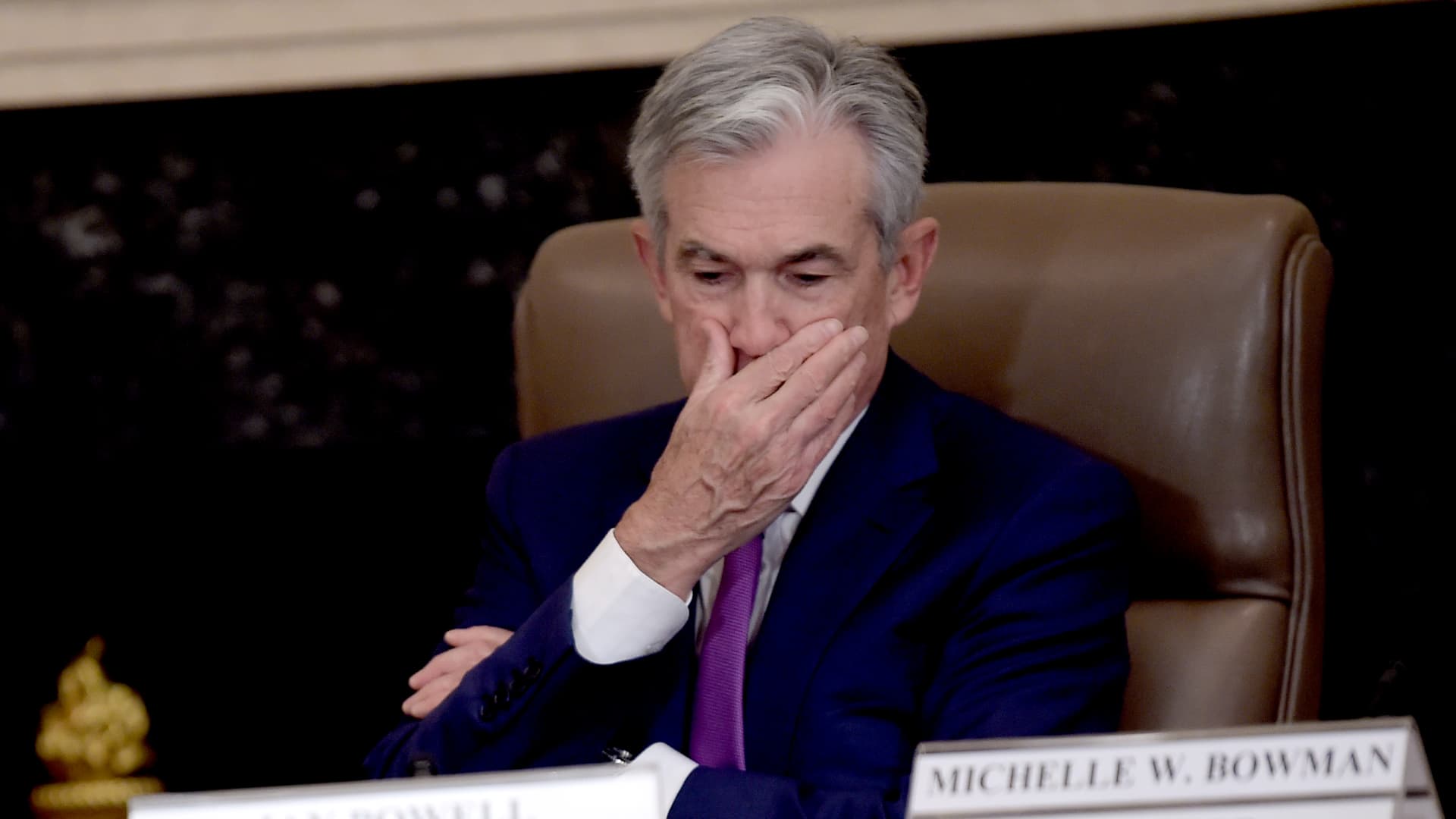US Federal Reserve Chair Jerome Powell attends a “Fed Listens” event in Washington, DC, on October 4, 2019.
Eric Baradat | AFP | Getty Images
A hotter-than-expected consumer price index reading rattled markets Wednesday, but markets are buzzing about an even more specific prices gauge contained within the data â the so-called supercore inflation reading.
Along with the overall inflation measure, economists also look at the core CPI, which excludes volatile food and energy prices, to find the true trend. The supercore gauge, which also excludes shelter and rent costs from its services reading, takes it even a step further. Fed officials say it is useful in the current climate as they see elevated housing inflation as a temporary problem and not as good a gauge of underlying prices.
Supercore accelerated to a 4.8% pace year over year in March, the highest in 11 months.
Tom Fitzpatrick, managing director of global market insights at R.J. O’Brien & Associates, said if you take the readings of the last three months and annualize them, you’re looking at a supercore inflation rate of more than 8%, far from the Federal Reserve’s 2% goal.
“As we sit here today, I think they’re probably pulling their hair out,” Fitzpatrick said.
An ongoing problem
CPI increased 3.5% year over year last month, above the Dow Jones estimate that called for 3.4%. The data pressured equities and sent Treasury yields higher on Wednesday, and pushed futures market traders to extend out expectations for the central bank’s first rate cut to September from June, according to the CME Group’s FedWatch tool.
“At the end of the day, they don’t really care as long as they get to 2%, but the reality is you’re not going to get to a sustained 2% if you don’t get a key cooling in services prices, [and] at this point we’re not seeing it,” said Stephen Stanley, chief economist at Santander U.S.
Wall Street has been keenly aware of the trend coming from supercore inflation from the beginning of the year. A move higher in the metric from January’s CPI print was enough to hinder the market’s “perception the Fed was winning the battle with inflation [and] this will remain an open question for months to come,” according to BMO Capital Markets head of U.S. rates strategy Ian Lyngen.
Another problem for the Fed, Fitzpatrick says, lies in the differing macroeconomic backdrop of demand-driven inflation and robust stimulus payments that equipped consumers to beef up discretionary spending in 2021 and 2022 while also stoking record inflation levels.
Today, he added, the picture is more complicated because some of the most stubborn components of services inflation are household necessities like car and housing insurance as well as property taxes.
“They are so scared by what happened in 2021 and 2022 that we’re not starting from the same point as we have on other occasions,” Fitzpatrick added. “The problem is, if you look at all of this [together] these are not discretionary spending items, [and] it puts them between a rock and a hard place.”
Sticky inflation problem
Further complicating the backdrop is a dwindling consumer savings rate and higher borrowing costs which make the central bank more likely to keep monetary policy restrictive “until something breaks,” Fitzpatrick said.
The Fed will have a hard time bringing down inflation with more rate hikes because the current drivers are stickier and not as sensitive to tighter monetary policy, he cautioned. Fitzpatrick said the recent upward moves in inflation are more closely analogous to tax increases.
While Stanley opines that the Fed is still far removed from hiking interest rates further, doing so will remain a possibility so long as inflation remains elevated above the 2% target.
“I think by and large inflation will come down and they’ll cut rates later than we thought,” Stanley said. “The question becomes are we looking at something that’s become entrenched here? At some point, I imagine the possibility of rate hikes comes back into focus.”







